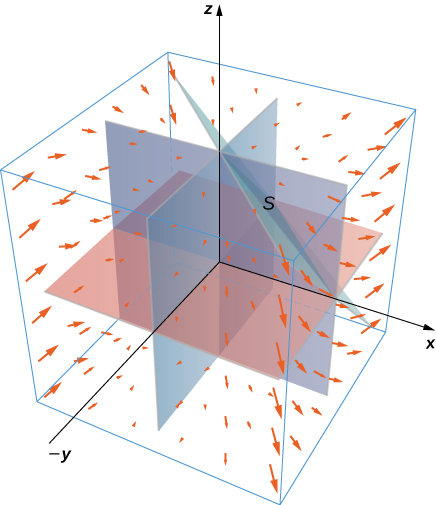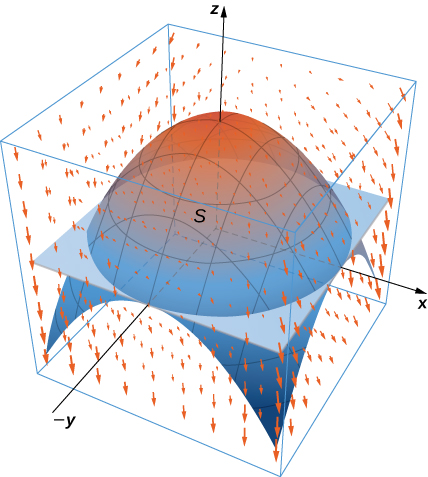| << Chapter < Page | Chapter >> Page > |
Use the divergence theorem to compute flux integral where and S is a part of cone beneath top plane oriented downward.
Use the divergence theorem to calculate surface integral for where S is the surface bounded by cylinder and planes
Consider Let E be the solid enclosed by paraboloid and plane with normal vectors pointing outside E . Compute flux F across the boundary of E using the divergence theorem.
For the following exercises, use a CAS along with the divergence theorem to compute the net outward flux for the fields across the given surfaces S .
[T] S is the boundary of the tetrahedron in the first octant formed by plane
[T] S is the surface of paraboloid for plus its base in the xy -plane.
For the following exercises, use a CAS and the divergence theorem to compute the net outward flux for the vector fields across the boundary of the given regions D .
[T] D is the region between spheres of radius 2 and 4 centered at the origin.
[T] D is the region between spheres of radius 1 and 2 centered at the origin.
[T] D is the region in the first octant between planes and
20
Let Use the divergence theorem to calculate where S is the surface of the cube with corners at oriented outward.
Use the divergence theorem to find the outward flux of field through the cube bounded by planes
Let and let S be hemisphere together with disk in the xy -plane. Use the divergence theorem.
Evaluate where and S is the surface consisting of all faces except the tetrahedron bounded by plane and the coordinate planes, with outward unit normal vector N .

Find the net outward flux of field across any smooth closed surface in where a , b , and c are constants.
Use the divergence theorem to evaluate where and S is sphere with constant
Use the divergence theorem to evaluate where and S is the boundary of the cube defined by
Let R be the region defined by Use the divergence theorem to find
Let E be the solid bounded by the xy -plane and paraboloid so that S is the surface of the paraboloid piece together with the disk in the xy -plane that forms its bottom. If find using the divergence theorem.

Let E be the solid unit cube with diagonally opposite corners at the origin and (1, 1, 1), and faces parallel to the coordinate planes. Let S be the surface of E , oriented with the outward-pointing normal. Use a CAS to find using the divergence theorem if

Notification Switch
Would you like to follow the 'Calculus volume 3' conversation and receive update notifications?